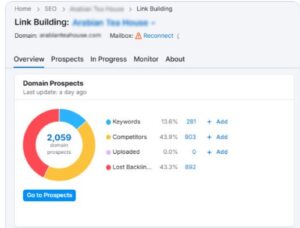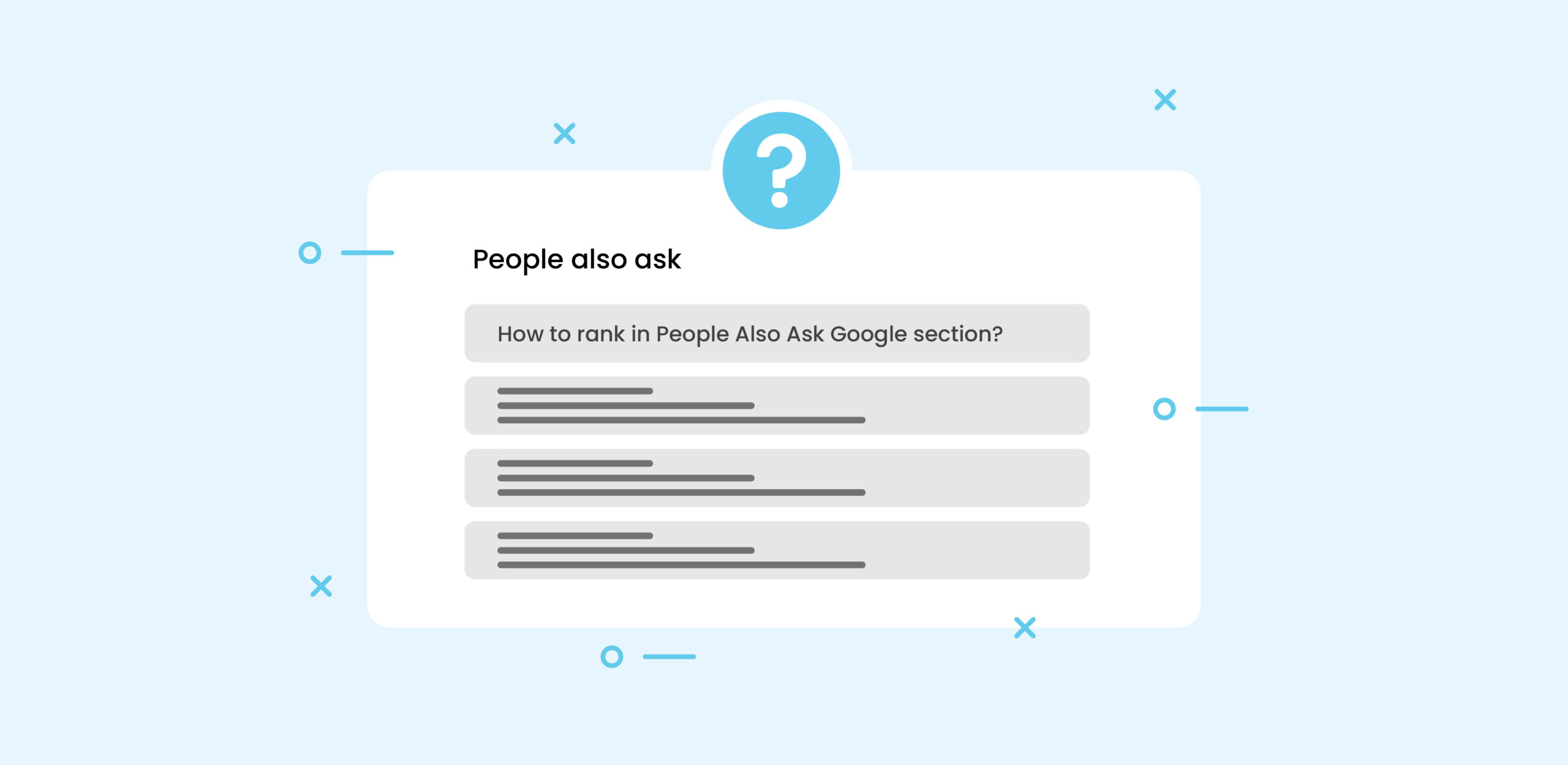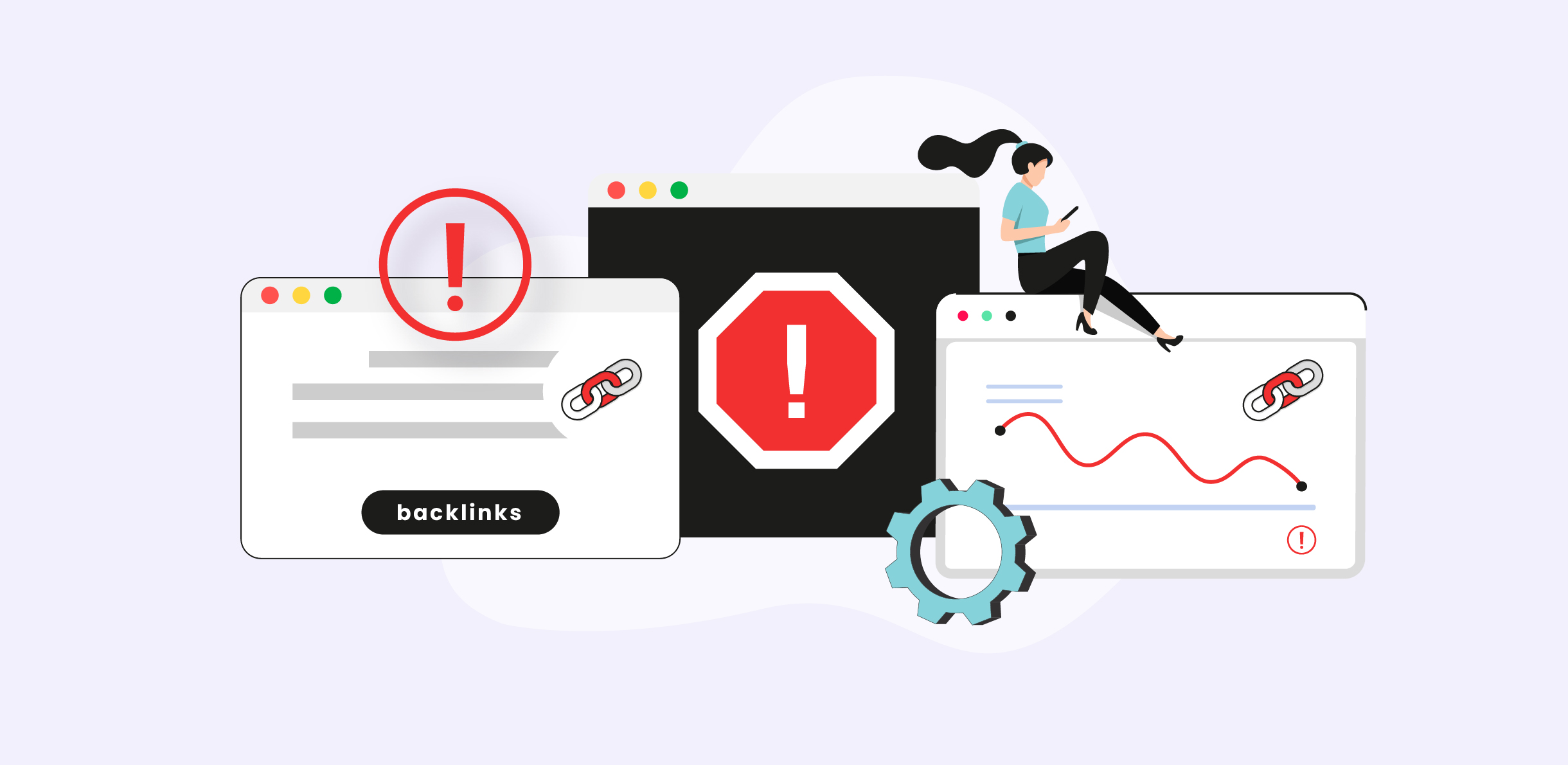Backlinks form the backbone of a website. It’s among the most valuable SEO factors that communicate to Google a site’s authority and relevance. But they’re also quite difficult to acquire. Google’s algorithm suggests that backlinks are one of the most important ranking factors. However, in order to improve your backlink profile, you must first review your current backlinks. And that can be accomplished with a thorough backlink profile analysis.
In this blog, we analyze the top tools for backlink analysis and break down the steps to find new and existing backlinks using each.
When Do You Need A Backlink Profile Analysis?
No matter how many new features evolve on SERP, PageRank still remains relevant to this day. And since this ranking factor mainly centers around understanding linking patterns to determine whether a website deserves the first page position for specific queries, you have to admit that backlinks are among the core SEO metrics for success.
To maintain a strong backlink profile, regular analysis and evaluation are a must. It lets you peek through your existing performance, so you can create a clearer vision of your future. Simply put, knowing your current backlink profile helps refine your existing backlink acquisition strategies.
But when exactly should you conduct a backlink profile analysis?
You can allocate a fixed duration for your team to conduct a backlink profile analysis and review overall progress over time. It could be scheduled every week, every month, every 3 months, or every 6 months. The general agreement on Reddit is that it should be done every month and be based on variables like the size of a website and content upload frequency.
On the other hand, a handful of circumstances require an urgent backlink analysis. For example:
- Before making major strategic decisions or alterations to your link-building plan
- When Google drops an algorithm update
- After you receive a manual Google penalty for backlinks
- When the website traffic drops unexpectedly
- After disavowing a large number of backlinks
How To Leverage Backlink Analysis for SEO Success?
If you want to crawl up to the top ten pages, your backlink profile can play a pivotal role in getting you there. But knowing how to leverage the data extracted from a backlink profile analysis is key to being successful on the SERP. Here is how it can help.
Analyze Your Backlink Profile
Your backlink profile is essentially information related to the domains linking to you. Backlink analysis is done based on the quality and quantity of these links. Both have value, but quality is often considered a stronger signal for site authority. This was confirmed by John Mueller from Google back in 2021. He said:
“We try to understand what is relevant for a website, how much should we weigh these individual links, and the total number of links doesn’t matter at all. Because you could go off and create millions of links across millions of websites if you wanted to, and we could just ignore them all.”
While this statement may not be entirely relevant in today’s context, it does clarify that Google puts more weight on backlink relevance than it does on numbers.
By conducting a thorough backlink analysis of your website, you can peek into critical link factors. For example, it can help spot the most linked to pages on your site, and allow you to review the total number of referring domains, as well as the value they lend to your pages. You can also assess and optimize anchor texts and identify harmful links.
Sneak on Competitor Backlinks
Most SEO gurus religiously follow their competitors to dig out backlinking opportunities. They’re your treasure ground to extract relevant websites that are interested in content similar to yours. If you’re aiming for the top positions, it’s always a good idea to conduct an SEO link audit of your competitors.
Think of it as a cheat sheet unraveling your competitors’ best referring domains, link types, and anchor texts. Use that as a blueprint to create highly relevant backlinks that provide value and strengthen your domain authority.
Identify Referring Domains
Finding a relevant link in an endless pool of domains across the web is like looking for a Javan Rhino in the Arabian Desert. It’s probably very hard to find. Same with backlinks.
But a referring domain analysis done on a regular basis can open you up to various opportunities. You can fish out top referring domains of your competitors to identify gaps in your backlink profile and outreach to websites passing high value to their pages.
At the same time, analyze your own profile to check the total number of unique domains linking to your site, along with relevant factors like domain authority, spam score, and anchor texts.
Set Future Goals
Monitoring your backlinks and setting targets based on your overall performance helps maintain pace in your link acquisition journey. Essentially, if you keep an eye on which type of content gets the most links, it helps identify opportunity areas. You can replicate the content of the most linked-to pages on the SERP to gain an edge over your competitors.
For this to work, you must regularly track the SERPs to identify niche trends, popular content formats, and backlink types. For example, if social media is directing most of a page’s referrals, it must contain a trending topic or social media challenge that people are currently interested in. You can benchmark this strategy to attract links to your own pages.
Disavow or Remove Low Quality Backlinks
One of the reasons why a website’s backlink profile should be assessed regularly is that it helps with toxic backlinks identification. Sometimes, you may unknowingly become part of a PBN link chain or receive unsolicited links from spammy websites. This poses a negative impact on your authority, which is why it’s important to identify and remove bad backlinks in time.
List down sites with high spam score and low authority to start your disavow file setup. Upload this file to the Google Disavow Tool, or request removal from the website administrator. The process will prevent their bad reputation from tainting your own.
Tools & Techniques for Backlink Profile Analysis
We now know why backlink profile analysis is so important for SEO, but how do you unravel all the information we just talked about? Most SEO tools feature resources that provide backlink insights for your own website as well as competitors. However, correct analysis is essential to pinpoint strategic gaps and explore opportunity areas.
Here are the three most popular tools used to analyze backlinks, combined with tips and tactics to detect and examine the retrieved data.
Google Search Console
Google Search Console is the most reliable tool to assess your backlink profile, since it gives you a one-on-one view of what Google sees on your site. While the data it yields is quite accurate, it has one drawback. It doesn’t have functionalities enabling a competitor backlink audit.
However, if you want to assess who, where, and how you have been linked to, GSC offers just the right resources. It offers a broader view of your backlink profile to help craft a link building plan tailored to your business goals. For a detailed breakdown on how to check backlinks using Google, review our recent blog.
Step-by-Step Process To Run A Backlink Analysis on GSC
- On the Google Search Console dashboard, select your property and scroll down to the Links report. This section breaks down all core insights regarding backlinks. Review top linking sites and the total number of links pointing from their site to yours.
- Sift through your most linked to pages to determine which areas of the website are doing well, and where you may need some tweaks.
- Next, navigate over to the top linking text section and review which anchors or keywords your website pages are currently linked on. Anchor text optimization is vital, as your anchor text conveys relevance to your website pages.
Subscribe to GSC alerts to get instant updates on lost links or new backlinks. This lets you monitor your progress proactively across the site and make timely changes to retain the health of your backlink profile.
Semrush
Semrush’s link-building tool series takes it up a notch with detailed analytics into each part of the link building journey. On this tool, you can visualize your backlink network, progress over time, backlink types (image, text, etc), and referring domain metrics (authority score and niche categories). You can also run a detailed SEO link audit and discover your toxicity profile next to the total number of referring domains and backlinks.
This report helps pinpoint which links are potentially dangerous for your backlink profile. You can add them to the disavow list and download it in a .txt file format to easily the Google Disavow Tool directly from there.
Step-by-Step Process To Run A Backlink Analysis on Semrush
- Identify a domain you want to assess. This could be your own domain or one of your competitors that’s rising up the charts quite consistently. Enter this domain into the Backlink Analytics tool and search. The window will give you a complete outline of the website’s backlinks. Here is what the loaded page looks like. Add in your competitor domains to assess how their backlink profile stacks up against yours.
- Navigate through the top tab on this page to access detailed data regarding backlinks, anchors, and referring domains. If you’re assessing a competitor, filter results by do-follow and active links. Download a .csv of this to identify opportunities and build an outreach plan.
- Next, switch over to the Link Building Tool to start setting up a plan to acquire backlinks. This tool gives you a comprehensive list of link prospects based on your niche keywords, competitors, and lost backlinks. Use this list to filter out the best prospects for your brand, and add them into the In Progress section. You can import this data to outreach manually, or send emails directly to your prospective websites.
One amazing tool to find prospects is the Backlink Gap analysis tool on Semrush. This tool lets you compare your backlinks against competitors. It also unlocks backlink gaps, which you can leverage to climb up the ranking charts. In essence, it’s one of the most valuable resources online to extract potential opportunities for backlinking.
Ahrefs
Ahrefs gives you comprehensive resources to monitor the backlink profile of any given website. Using their tools, you can assess everything from referring domains to broken backlinks and top anchors.
Also, it’s the tool to steal competitor backlink data, letting you discover links currently powering your competitor’s rankings. Collect and leverage this data to administer high-potential referring domains into your existing profile.
Step-by-Step Process To Run A Backlink Analysis Using Ahrefs
- Go to Dashboard and select your project. If you are analyzing a competitor’s domain, you may need to navigate to the backlink insights through Site Explorer tool. Once you pull up the accumulated backlink data, it will give you a list featuring a complete breakdown of referring pages (with domain traffic, their referring domain numbers, and keywords). You can also differentiate active links from broken links by following the red tags next to selected backlinks.
- To separately analyze all existing broken links, navigate to the Broken Links section and check which links have been lost. If you have lost valuable links, reach out to the relevant referring websites to request reconsideration or link activation.
- Aside from these, Ahrefs offers a lineup of tools to extract backlink data. They let you analyze backlinks categorically by distinguishing them based on referring domains, anchor text, linking authors, and even referring IPs.
The three-tiered thumb rule for evaluating backlink quality is relevance, authority, and low spam score. Any referring domain that delivers positive signals on these metrics is a great resource for backlinks.
In the end, the three listed tools in this guide are the proprietary tools Webmasters use to analyze their own and their competitors’ backlinks. Any information you receive via these tools can be exported for further analysis. The insights are valuable if you unlock the right techniques to examine, organize, and utilize the collected data.
Anyway, if the backlink acquisition process is not your cup of tea, Link Building HQ is there to take on the job. Our first step in project initiation is to run a comprehensive backlink profile analysis. The collected insights are used to create an impactful link-building plan customized to the niche, industry, and business size for each client.
















